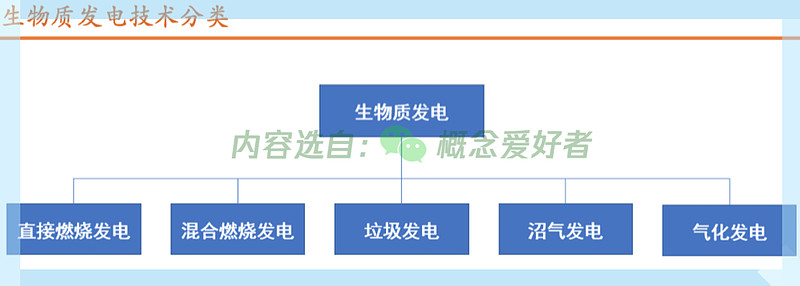hotline
New Energy generation can not be ignored, biomass power generation has a bright future
- Categories:Industry News
- Author:概念愛好(hǎo)者
- Origin:北極星垃圾發電網
- Time of issue:2021-10-20 15:06
- Views:
(Summary description)
New Energy generation can not be ignored, biomass power generation has a bright future
(Summary description)
- Categories:Industry News
- Author:概念愛好(hǎo)者
- Origin:北極星垃圾發電網
- Time of issue:2021-10-20 15:06
- Views:
Information
1, the context
Recently, Harbin Chenneng Biomass Power Generation Co. , Ltd. in biomass power generation operations, in the grain-producing province of Heilongjiang, part of the local material, the “Waste”into electricity.
In recent years, biomass power generation is not as popular as photovoltaic power generation and wind power generation, but in fact, China is also developing in biomass power generation, there may be more room for development in the future.
2、Understanding biomass power generation
Biomass refers to a variety of organisms, including plants, animals and microorganisms, formed directly or indirectly through photosynthesis.Biomass energy refers to the energy stored in biomass by solar energy in the form of chemical energy. It is a kind of clean and environmental protection renewable energy. Biomass power generation refers to the use of biomass with biomass energy for power generation.Biomass power generation includes agricultural and Forestry Biomass Power Generation, waste incineration power generation and biogas power generation. Agricultural and forestry biomass power generation technology can be divided into direct combustion power generation and mixed combustion power generation.

3、Industry upstream analysis
Due to the shortage of cultivated land, the biomass resources in China are mainly composed of various kinds of residues and wastes (passive biomass resources) , including agricultural wastes, forestry wastes, domestic garbage, sewage sludge, etc. .
1). Straw
At present, according to the relevant statistical data of the Ministry of Agriculture and rural areas, it can be estimated that China’s Straw production is about 829 million tons, and the amount of collectable resources is about 694 million tons. According to the analysis of China’s grain output statistics released by the National Bureau of Statistics of the People’s Republic of China, China’s grain output has maintained a steady upward trend of 1% in recent years, and it is expected that the total amount of straw resources will also maintain a steady upward trend in the future, in 2030, the amount of straw produced was about 916 million tons, and the amount of Straw collected resources was about 767 million tons.
2). Livestock and poultry waste
In a broad sense, the excrement of livestock and poultry is mainly excreted excrement and urine. At present, according to the China Agricultural Yearbook, China Rural Statistical Yearbook, China Animal Husbandry and veterinary yearbook and the latest data from the National Bureau of Statistics of the People’s Republic of China, the total amount of livestock and poultry waste resources in China is 1,868 million tons. According to the statistical data of the yearbook, it is predicted that the meat, egg and milk consumption market will be saturated in the future, the amount of livestock and poultry excrement resources will remain in a fixed range, and the amount of livestock and poultry excrement resources will keep a low growth trend of 0.6% . The total amount of livestock and poultry waste resources is estimated to be 1,983 million tons in 2030 and 2,373 million tons in 2060.
3). Forestry residues
According to the data analysis of China Forestry and Grassland Statistical Yearbook in recent 20 years, the total amount of forest cutting resources keeps 2% increase, and the amount of remaining forest resources is expected to continue to increase in the future. It is estimated that the total amount of forest residues will reach 427 million tons in 2030 and 773 million tons by 2060.
4). Household garbage
According to the “China urban and Rural Construction Statistics Yearbook”released by the Ministry of Housing and Construction, the current domestic waste removal volume is about 310 million tons, and in recent years the increase rate of waste removal volume is about 3% . In recent years, China’s food waste transport volume continued to maintain a 3.6% increase.
At the same time, because of the continued promotion of garbage classification, wet garbage from the domestic waste separation, food waste gradually increased the proportion of garbage. Take Shanghai as an example, since the implementation of waste classification, by the end of 2020, wet waste accounted for about 31% . Assuming that by 2030, the implementation area of comprehensive waste separation will reach 10 per cent, the food waste removal capacity will reach 172 million tons, and by 2060, the implementation area of comprehensive waste separation will reach 50 per cent, and the food waste removal capacity will reach 419 million tons.
5). Waste Grease
China’s consumption of edible vegetable oil was 33.82 million tons in 2020, according to the China Agriculture Outlook report. According to the industry data, the waste oil produced by livestock and poultry treatment is about 30% of the consumption of edible oil, and the current waste oil is more than 10.551 million tons. The China Agriculture Outlook report estimated the production of waste oils and fats to be about 11.313 million tons by 2030.
6). Sewage sludge
According to the analysis of the data in the Statistical Yearbook of urban and rural construction of the Ministry of Housing and urban-rural construction, the current domestic sewage sludge production in China is 14.3357 million tons, and the growth rate of domestic sewage sludge production is about 5-8% . The dry weight of sewage sludge is estimated to be about 30.9496 million tons in 2030 and about 140 million tons in 2060.
4. Industry Outlook
1). There is a big future for biomass power generation powered by carbon dioxide
Carbon peak carbon neutralization target is the inherent requirement and inevitable trend of high quality development of China’s economy. Biomass power generation technology is one of the most popular and effective methods in the application of biomass energy. Combined with Bio-energy with carbon capture and storage technology, biomass would create negative carbon emissions.
In the future, biomass energy will contribute greatly to the carbon peak in 2030 and carbon neutrality in 2060 in various fields. At present, the energy-based utilization of biomass resources in China is about 461 million tons, the utilization of biomass energy, including biomass power generation, biomass heating, bio-natural gas, liquid biofuel and fertilizer substitution, has achieved carbon emission reduction of about 218 million tons.
By 2030, the total installed capacity of biomass power generation in China is expected to reach 52 million kilowatts, providing more than 330 billion kilowatt hours of clean electricity and reducing carbon emissions by more than 230 million tons. By 2060, the total installed capacity of biomass power generation in China will reach 100 million kilowatts, providing more than 660 billion kilowatt hours of clean electricity and reducing carbon emissions by more than 460 million tons.
2). The income pattern of biomass power generation is stable and the cash flow of the project is good
Biomass power generation enterprises have high policy sensitivity, relatively stable policy and price system to help stabilize business expectations. Under the renewable energy law, the price policy of biomass power generation has also been adjusted appropriately with the development of the industry and changes in the external environment. Its feed-in Tariff and subsidy policy has been changed from the fixed subsidy system of 2006, gradual transition to the current fixed price system.
The garbage power generation operation income is stable, the project cash flow is good. Garbage operation generally adopts franchise, the mainstream is the BOT (build-operate-transfer) or BOO (build-own-operate) model, franchise period is generally 25-30 years.
Scan the QR code to read on your phone





